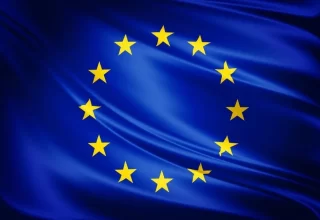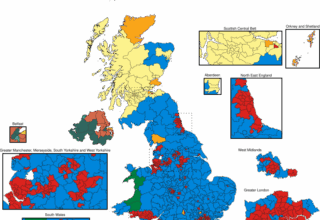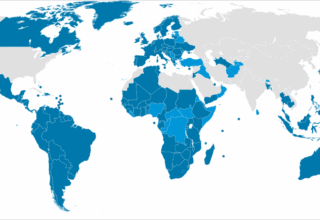
China’s campaign to incorporate Taiwan under its leadership has been a focus of tensions in the region for decades. Japan has been drawn into this wider conflict, as it is a littoral state of the East China Sea which borders Taiwan and China. Not only out of a historical rivalry between Beijing and Tokyo, the economic rise of the People’s Republic of China and its associated rise in defense investments have been closely observed by the Japanese authorities. China has massively invested in increasing their A2/AD (Access To/Area Denial) capabilities along its shores as well as its military presence in the East China Sea (Daisaku, 2018).
The semi-closed East China Sea covers an area of about 750,000 km² and is mostly ( ~75%) rather shallow with depths of less than 200 m and average depth of ca. 350 m. What explains the latter figure is that in the Okinawa Trough the sea plunges into depths of up to 1,000 m (LaFond, 2021). This sea is rich in marine-life productivity and littoral states are active in fishing there (ibid.). China already wins a small amount of its domestic oil and gas production from offshore wells there, however, the discovery of new oil and gas deposits further offshore under the sea’s continental shelf has led to disputes over the Senkaku Islands (ibid.). Estimates of oil reserves go up to 200 million barrels, located in particular in the Okinawa Trough (Council on Foreign Relations, 2021).
Japan’s southern prefecture of Okinawa comprises more than 150 islands stretching from the southern tip of Kyushu along an arc towards Taiwan, hence the name Ryukyu Arc. Yonaguni, the westernmost island of the Okinawa prefecture, lies only 111 km east of Taiwan. This long chain of islands builds the eastern border of the East China Sea and gives control to Japan over the access to the Philippine Sea and the Pacific Ocean. The only open waterway between the Ryukyu Islands, and hence, free passage for ships, is the approximately 250 km wide Miyako Strait, which is also known as the Kerama Gap. The Chinese navy has used this passage to send its vessels in the Pacific (Gan, 2016). The sea is the main shipping route from the South China Sea via the Strait of Taiwan to Japanese and other North Pacific harbors.
Senkaku or Diaoyu Islands?
The uninhabited Senkaku islands lie equidistantly (about 170 km) from the northeastern tip of Taiwan and the southwestern most islands of the Okinawa prefecture and almost double that distance (330 km) from the Chinese coast. They have been under Japanese control since 1885 with the notable exception of the post-WWII years under American administration, before they had not been claimed by any state (Finney, 1971). Tokyo’s sovereignty over these islands had never been contested until the 1970s when indications of oil reserves in their vicinity emerged (Lee, 2002). China as well as Taiwan covet these islets also because they abut important sea lanes and lie amidst rich fishing grounds, and hence take up a significantly strategic position in the East China Sea (BBC, 2018). After WWII, Japan forsook sovereignty over several territories and islands like the Ryukyu Arc and Taiwan. However, in 1971, the Ryukyu Islands were returned to Japan under the 1971 Okinawa reversion deal (ibid.).
On the other side, Beijing claims that the Diaoyu Islands (as they are named in Chinese) have made part of its territories since medieval times and had been administered by the province of Taiwan. After the Sino-Japanese war at the end of the 19th century, China had to cede Taiwan to Japan, but according to the 1951 Treaty of San Francisco, in which Tokyo had renounced claims on territories and islands, received them back (BBC, 2018). Although, bilateral agreements concerning fishing rights around the Senkaku Islands between the three countries had been signed in the 1990s, the legal question of sovereignty had been left unresolved (Mochizuki & Han, 2020). As China claims – in accordance with the UNCLOS concerning open seas – that the natural continuation of the continental shelf justifies the extension of its Exclusive Economic Zone to 200 nautical miles reaching into the Okinawa Trough (UN, 2012). This claim clashes with an earlier Japanese proposal of considering a median line division between the two states – as would be foreseen in the UNCLOS in (semi-)closed seas (Ministry of Foreign Affairs of Japan, 2006).
In 2012, the dispute came to a boil after decades of simmering, when the then Governor of Tokyo prefecture Shintaro Ishihara stated he would buy the Senkaku Islands from their private Japanese owner with public funds. The Japanese government at that time made an agreement with the proprietor to purchase three islets lest Mr. Ishihara would enact his scheme. This whole affair displeased Beijing which staged public and diplomatic protests, ever since sending ships into the territorial waters around the islands (BBC, 2018). In late 2013, escalating the tensions further, Beijing proclaimed a new air-defense identification zone including the Senkaku islands asking of any aircraft passing there to comply with Chinese rules of conduct. Branded as a “unilateral escalation” by Japanese authorities, they and the US ignore this zone. Washington is supporting Japan in this row since both states form a security alliance, in which US access to and possession of military bases on Japanese territory guarantees US support in case of attacks on Japan (ibid.).
There have been attempts to establish procedures to de-escalate and regulate the dispute in order to avoid more serious clashes. In 2007, the Chinese proposed to the US to commonly manage the Pacific Ocean via an agreement similar to those signed between Spain and Portugal at Tordesillas (1494) and at Zaragoza (1529), in which the former empires secured themselves their own spheres of influence in the Atlantic Ocean (BBC, 2018). Of course, this idea was then as unrealistic as today. That the US is siding with Japan was clarified in 2014, when former US president Barack Obama asserted that the Senkaku Islands were covered by the US-Japan Security Treaty. In 2018, a maritime and aerial communication mechanism launched after years of high-level consultations between Tokyo and Beijing (Council on Foreign Relations, 2021). This mechanism is still in place, nevertheless, it has not deterred China from violating Japanese territorial waters and airspace and staging provocative actions, as the regular exercises of the Chinese Navy and the State Oceanic Administration in the waters and airspace close to Japan show (BBC, 2018). Furthermore, routine Chinese patrols and the practice of tailing Japanese boats inside the territorial waters of the Senkaku Islands has been a constant provocation towards Japan, and has discouraged Japanese fishing activities in the area. Other episodes when Chinese Coast Guard ships accompanied large fishing fleets in the territorial waters can be seen as a tactic to undermine Japanese sovereignty there (Mochizuki & Han, 2020).
Japan’s defense against Chinese geopolitical plans
Beijing’s relentless attempts at intimidating the Japanese authorities have led to a re-thinking of Japanese defense (Przystup, 2015). As a legacy from the Cold War period, Japan had built defense infrastructure on Hokkaido to parry any Soviet aggression there deemed the most realistic threat. Hence, the defense of the Okinawa prefecture had been neglected and as today a Chinese attack on the southwestern islands of the Ryukyu Islands to secure themselves a corridor to the Pacific seems a more menacing possibility (ibid.). These islands lie closer to mainland China than to Japan’s main islands, which presents a tactical advantage to Beijing. To counter China’s growing military powers in the region, Tokyo has responded in kind. In an effort to strengthen the southwestern flank, Japanese forces are evolving: new units of coast surveillance, an amphibious brigade for rapid responses, long-haul aircraft and helicopters have been established there (Daisaku, 2018).
Based on Japan’s 2013 Guidelines for Defense, the installation of a unified operative unit would serve to offset an offense on this island region. In case of an invasion, Japan would attack the enemy with combined naval and air incursions before re-conquering lost islands by landing troops (Przystup, 2015). However, a complicating factor for such a defense plan would be the circumstance, in which un-ensigned paramilitary troops attacked. Then the Japanese forces of self-defense could not automatically intervene as they are only lawfully allowed to fight analogous enemy troops (Daisaku, 2018). In light of exactly this scheme having played out in Eastern Ukraine by un-ensigned Russian troops, China may well apply it to avoid a direct confrontation with Japan’s military.
Even though Beijing has achieved a momentary military advantage in the East China Sea, its outward strategy suffers from several weak points (Daisaku, 2018). For one, no other littoral state offers China the use or even guaranteed access to their naval ports. The sole supervision over coasts does not suffice to control waterways; for precisely this reason is the possession of Taiwan cardinal for the Chinese to project their naval power outward towards the open Pacific. Furthermore, China’s Belt and Road Initiative is based on the possible dual-use of ports along these routes, for which the military control over sea lanes is essential (ibid.). Therefore, keeping China locked out of other littoral states’ ports in the East China Sea offers itself as the natural strategy to Japan.
On a geo-economic level, Japan’s counter plan to the Belt and Road Initiative is the Free and Open Indo-Pacific Strategy launched under former prime minister Shinzo Abe, which envisions a greater integration of African and Asian economies between the Indian and Pacific oceans to reduce those states’ dependence on Beijing and realize a closer collaboration on the security of the seas. This project is also driven to strengthen Japanese companies in competition with Chinese state-owned enterprises as well as intensify cooperation between the so-called ‘Quad’ states, a security cooperation between Japan, India, Australia and the US (Pajon, 2019).
An even larger challenge to Japan is China’s use of alternative weapons of sharp power to influence principally Western views of the latter: war of (public) opinion, psychological warfare and legal warfare (Daisaku, 2018). The institutionalized manipulation of information and attempts at intimidation (e.g., economic sanctions against Norway when the Nobel Peace Prize had been awarded to Chinese dissidents, restrictions for South Korean tourists when the defense system Thaad was installed on their national territory, acquisition of real estate close to military installations in Japan, or cyber attacks against Japanese servers) present to Tokyo threats they cannot neutralize by themselves. In this context, the recent intensification of western efforts to lend support to Japan look like a positive signal to defend Japanese sovereignty.
Bibliography:
BBC (2014, Nov 10). How uninhabited islands soured China-Japan ties. https://www.bbc.com/news/world-asia-pacific-11341139
Council of Foreign Relations (2021). Tensions in the East China Sea. https://microsites-live-backend.cfr.org/global-conflict-tracker/conflict/tensions-east-china-sea
Daisaku, S. (2018, Mar 08). The next war between China and Japan. https://www.limesonline.com/cartaceo/la-prossima-guerra-tra-cina-e-giappone
Finney, J.W. (1971, Nov 11). Senate Endorses Okinawa Treaty. https://www.nytimes.com/1971/11/11/archives/senate-endorses-okinawa-treaty-votes-84-to-6-for-islands-return-to.html?sq=1972+okinawa&scp=44&st=p
Lee, S. (2002). Territorial Disputes Among Japan, China and Taiwan Concerning the Senkaku Islands. Boundary and Territory Briefing, 3(7).
Gan, N. (2016, Sep 25). China dispatches one of its largest air force fleets ever near Okinawa in show of force to Japan. https://www.scmp.com/news/china/diplomacy-defence/article/2022467/china-dispatches-big-air-force-fleet-near-okinawa-show
LaFond, E.C. (2021). East China Sea. https://www.britannica.com/place/East-China-Sea
Ministry of Foreign Affairs of Japan (2006). Diplomatic Bluebook. https://www.mofa.go.jp/policy/other/bluebook/2006/index.html
Mochizuki, M. & Han, J. (2020, Sep 16). Is China escalating tensions with Japan in the East China Sea? https://thediplomat.com/2020/09/is-china-escalating-tensions-with-japan-in-the-east-china-sea/
Pajon, C. (2019, Dec 18). Japan’s Indo-Pacific Strategy: Shaping A Hybrid Regional Order. https://warontherocks.com/2019/12/japans-indo-pacific-strategy-shaping-a-hybrid-regional-order/
Przystip, J. (2015). The U.S.-Japan Alliance: Review of the Guidelines for Defense Coopeation. Institute for National Strategic Studies Strategic Perspectives, No. 18.
UN (2012, Sep 21). Maritime Zone Notifications. Deposit by the People’s Republic of China. https://www.un.org/depts/los/LEGISLATIONANDTREATIES/PDFFILES/mzn_s/mzn89ef.pdf
By Andreas Rösl : The European Institute for International Law and International Relations.















